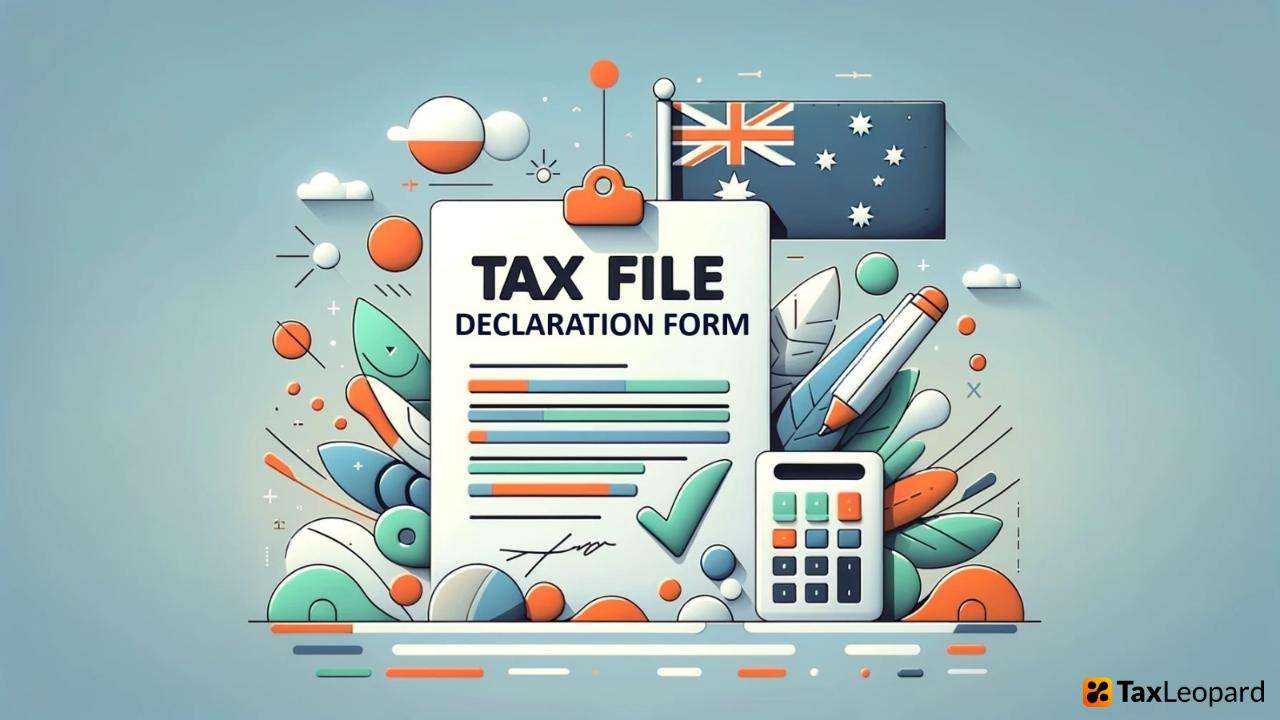Employers frequently struggle with understanding tax file declarations and withholdings. When financial details are incorrect or missing, complications arise. For instance, employees often fail to provide their tax file number, or TFN, leading to excessive withholding. Furthermore, missed superannuation obligations or foreign income complicate the process. The Australian Taxation Office (ATO) provides the solution with its Tax File Number Declaration form.
Using this, employers collect accurate data for each new employee. This form ensures that income tax deductions remain accurate and keeps businesses in compliance. Detailed guidance on this process is provided throughout this article.
What is a Tax File Declaration Form?
A Tax File Declaration Form is a crucial document in Australia, used primarily by employees to provide tax-related information to their employers. This form, integral to the Australian tax system, requires individuals to declare their tax file number (TFN) and other pertinent details, such as their residency status, for tax purposes. Its primary function is to help employers determine the correct amount of tax to withhold from an employee’s wages.
Legal Significance in Australia
The Tax File Declaration Form holds significant legal importance in Australia. It ensures compliance with the Australian Taxation Office (ATO) regulations. Failure to complete this form correctly can lead to incorrect tax withholding and potential legal repercussions. It’s a mandatory requirement for all working individuals, underscoring its critical role in the country’s tax infrastructure.
Eligibility for Filing a Tax File Declaration
Who Needs to File?
Filing this form is mandatory for every new employee in Australia. It’s essential for anyone starting a new job or changing their employment status. This includes part-time, full-time, and casual workers, as well as contractors and freelancers who are subject to payroll tax.
Exceptions and Special Cases
There are exceptions and special cases in the filing process. For instance, students working part-time may have different tax withholding rates. Foreign workers on temporary visas also follow distinct guidelines. Understanding these exceptions is crucial to ensuring accurate tax filing and compliance with Australian tax laws.
Components of the TFN Declaration Form
Section-wise Explanation
The TFN Declaration Form is divided into various sections, each designed to capture specific information. Sections include personal details like name and address, tax file number, declaration of residency status, and financial details such as eligibility for a tax-free threshold. Each section must be filled out accurately to ensure a proper tax calculation.
Key Fields and Their Meanings
Among the key fields in the form are:
- Tax File Number (TFN): A unique identifier for tax and superannuation purposes.
- Residency Status: Determines if different tax rates apply.
- Tax-Free Threshold Claim: Indicates whether the individual claims the tax-free threshold, affecting the amount of tax withheld.
- Higher Education Loan Program (HELP) Debt: Indicates if the employee has any educational loans, which affects tax withholding.
These fields are critical in determining an individual’s tax obligations and withholdings in Australia.
How to Obtain the TFN Declaration Form
Online Resources:
Accessing the Tax File Declaration Form is straightforward through online platforms. The Australian Taxation Office (ATO) website is the primary source. Here, you can download the form in PDF format. Additionally, various Australian government portals offer direct links to the form, ensuring easy accessibility. It’s vital to ensure the downloaded form is the latest version, as tax regulations may change.
Physical Locations for Collection:
For those who prefer a physical copy, the Tax File Declaration Form is available at various locations. You can visit local ATO offices or request a form at Australian post offices. Some community centres and libraries also keep these forms. Remember, during peak tax seasons, these physical locations might experience higher demand, so plan your visit accordingly.
Completing the Tax File Declaration Form
Step-by-Step Guide:
- Start by filling in your details, including your full name and date of birth.
- Enter your Tax File Number (TFN). If you don’t have one, apply for it beforehand.
- Indicate your employment status and residency for tax purposes.
- Declare your eligibility for the Senior Australian Tax Offset, if applicable.
- Complete the declaration section, confirming the accuracy of the information provided.
Online Submission Process:
Submitting the Tax File Declaration Form online is efficient. Employers often facilitate this process through their payroll systems. If self-submitting, use the ATO’s online services via myGov. Ensure your myGov account is linked to the ATO. This process ensures faster processing and immediate acknowledgement of submissions.
Physical Submission: Where and How?
For a physical submission, complete the form and hand it to your employer. They are responsible for submitting it to the ATO. If required to submit it yourself, mail it to the ATO’s address provided on their website. Ensure to keep a copy for your records.
Post-Submission Process
Acknowledgement and Receipt:
Upon submission, you’ll receive an acknowledgement. For online submissions, this is almost instantaneous via email or through the myGov portal. For physical submissions, employers typically confirm receipt. It’s crucial to keep this acknowledgement as proof of submission.
What Happens Next?
After the ATO processes your form, they update your tax records. This affects how your income is taxed. If discrepancies or further information are needed, the ATO will contact you. Ensure to monitor your contact details provided on the form for any communication from the ATO.
Common Mistakes to Avoid
- Failing to update financial details and withholding incorrect amounts.
- Overlooking super guarantee obligations when managing new employee information.
- Neglecting to save important tax return forms as PDFs or submitting foreign income incorrectly.
- Forgetting to request income information through MyGov or ATO’s website.
- Not using email to request assistance or missing crucial deadlines when working out the fiscal account balance.
- Overclaiming deductions for expenses that aren’t related to business activities.
- Failing to check the company address on documents before posting them via mail.
Conclusion
The Tax File Declaration form is crucial for determining the right amount of tax to withhold. Correct financial details will ensure compliance with obligations and save time and effort. This process simplifies the declaration of income, particularly with the convenience of myGov. The form can also assist in identifying super guarantee contributions and handling foreign income. Do you find the Tax File Declaration process efficient, or do you feel it could be improved?
FAQs
1. How does this form relate to superannuation contributions?
The form informs employers of the super guarantee requirements applicable to each employee.
2. Are there penalties for not submitting it?
While no direct penalties apply, not submitting the form can delay tax refund processing.
3. Can changes be made to the submitted form?
If financial details change, the form can be filled out again to provide updated information.
4. Does this form affect foreign income?
Yes, any foreign income should be disclosed so that accurate withholding is ensured.
5. Can incorrect information affect my tax return?
Yes, inaccurate details might result in incorrect withholding, which could affect your tax refund.




